INDIAN ARMED FORCES CHIEFS ON OUR RELENTLESS AND FOCUSED PUBLISHING EFFORTS

The insightful articles, inspiring narrations and analytical perspectives presented by the Editorial Team, establish an alluring connect with the reader. My compliments and best wishes to SP Guide Publications.

"Over the past 60 years, the growth of SP Guide Publications has mirrored the rising stature of Indian Navy. Its well-researched and informative magazines on Defence and Aerospace sector have served to shape an educated opinion of our military personnel, policy makers and the public alike. I wish SP's Publication team continued success, fair winds and following seas in all future endeavour!"

Since, its inception in 1964, SP Guide Publications has consistently demonstrated commitment to high-quality journalism in the aerospace and defence sectors, earning a well-deserved reputation as Asia's largest media house in this domain. I wish SP Guide Publications continued success in its pursuit of excellence.
- Global Partners Urged to Tap India's Shipbuilding Potential: Rajnath Singh at Samudra Utkarsh
- All about HAMMER Smart Precision Guided Weapon in India — “BEL-Safran Collaboration”
- India, Germany deepen defence ties as High Defence Committee charts ambitious plan
- G20 Summit: A Sign of Global Fracture
- True strategic autonomy will come only when our code is as indigenous as our hardware: Rajnath Singh
- India–Israel Joint Working Group Meeting on defence cooperation to boost technology sharing and co-development
INS 'Vagir' Delivered
Vagir is a state-of-the-art submarine featuring advanced stealth features and is designed for multifarious missions like anti-surface, anti-submarine, intelligence gathering, surveillance, and mine-laying
 |
The Author is Former Director General of Information Systems and A Special Forces Veteran, Indian Army |
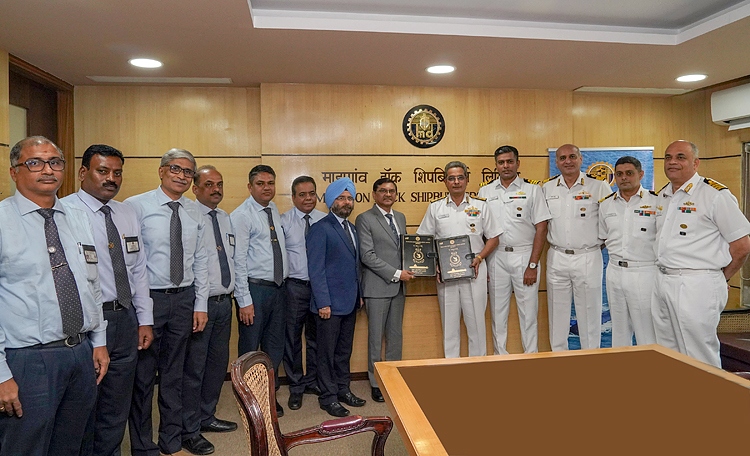
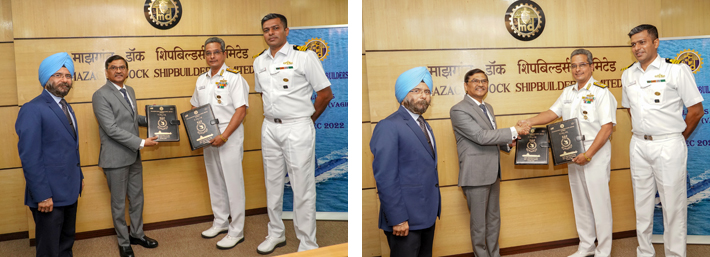
The Indian Navy (IN) took delivery of INS ‘Vagir’ (S25) on December 20, 2022. This is the fifth submarine under the Project-75, Kalvari class submarines. It is a diesel-electric attack submarine based on the Scorpene class, designed by the French naval defence and energy group ‘Naval Group’ and manufactured by the Indian shipyard ‘Mazagon Dockyard Limited’ (MDL) in Mumbai. The submarine was launched on November 12, 2020 and inherits its name from INS ‘Vagir’ (S41) which served the IN from 1973 to 2001 and was named after a species of sandfish.
Vagir is a state-of-the-art submarine featuring advanced stealth features, including acoustic absorption. It is designed for multifarious missions like anti-surface, anti-submarine, intelligence gathering, surveillance, and mine-laying. INS Vagir commenced sea trials on February 1, 2022 and has completed all major trials including the weapon and sensor trials in short time compared to earlier submarines. Its commissioning is likely to be in early 2023.
Indian Navy is at least nine short in terms of attack submarines compared to the ideal requirement of 24 in this category
Characteristics of INS Vagir include:
- Displacement – Surfaced 1,615 tonnes (1,780 short tonnes) and Submerged 1,775 tonnes (1,957 short tonnes);
- Length – 67.5 metres; Beam – 6.2 metres; Height – 12.3 metres; Draught – 5.8 metres;
- Propulsion – 4 x MTU 12V 396 SE84 diesel engines, 360 x battery cells, DRDO PACF Fuel Cell AIP to be added in mid-life refit;
- Speed – Surfaced 11 kn (20km/h) and Submerged – 20 kn (37 km/h);
- Range – 6,500 nmi (12,000 km) at 8 kn (15 km/h) (surfaced), 550 nmi (1,020 km) at 4 kn (7.4 km/h) (submerged);
- Endurance – 50 days;
- Test Depth – 350 metres;
- Electronic Warfare and Decoys – C303/S anti-torpedo countermeasure system, and;
- Armament – 6 x 533mm torpedo tubes for 18 SUT torpedoes or SM.39 Exocet anti-ship missiles, 30 mines in place of torpedoes.
The issue of concern is that the Navy is at least nine short in terms of attack submarines compared to the ideal requirement of 24 in this category. Moreover, the decommissioning of the INS Sindhudhvaj in July 2022 starts a process that would end with the retirement of all boats in the class by the end of the decade. Ironically, Project-75 (the Kilo-class replacement programme) is moving at a snail’s pace.
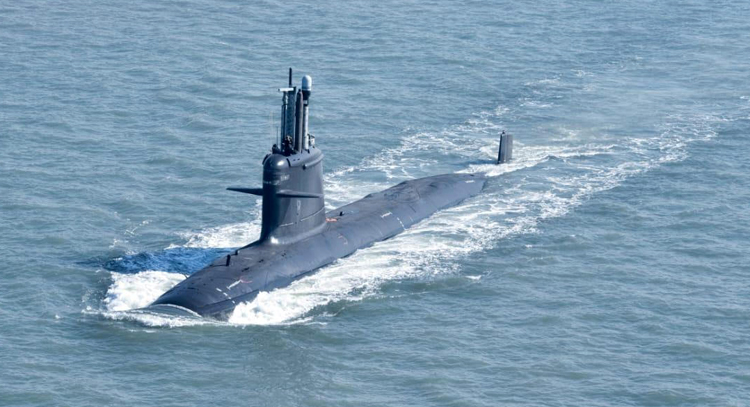
Six Scorpene class submarines ought to have been delivered between 2012 and 2016. But INS Kalveri, the first vessel, was not launched until 2017, five years later than anticipated. Two more submarines, the INS Khanderi and INS Karanj were put into service by 2020, but none of them possessed a complete stock of their main weapon, the torpedo.
There is a shortage of 100 x Black Shark Torpedoes. These could not be delivered because the Ministry of Defence (MoD) blacklisted Finmeccanica due to the AugustaWestland VVIP chopper scandal, which in turn prevented Finmeccanica’s subsidiary company ‘WASS’ from delivering the Black Shark Torpedoes. The Navy therefore became the suckers with submarines sans full complement of torpedoes. As it is, the Navy’s submarine arm is under considerable strain with only 15 conventional submarines. Vagsheer, the sixth and final submarine in the Scorpene programme, is due for induction in early 2024.
There is a shortage of 100 x Black Shark Torpedoes. The Navy therefore has submarines sans full complement of torpedoes.
Six submarines are to be constructed under P-75(I) under the Strategic Partnership (SP) model promulgated by the Defence Acquisition Council (DAC) on May 31, 2017. On July 20, 2021, the MoD issued a request for information (RFP) for the construction of the six submarines, worth 43,000 crore ($5.4 billion), under the “Strategic Partnership” model. Nevertheless, the deadline of the RFP, which was initially scheduled for November 2021, was postponed to June 2022, then again to December 2022 and again to “late 2023”. Therefore, the induction of these submarines will only commence earliest by 2030, that too if there are no more postponements.
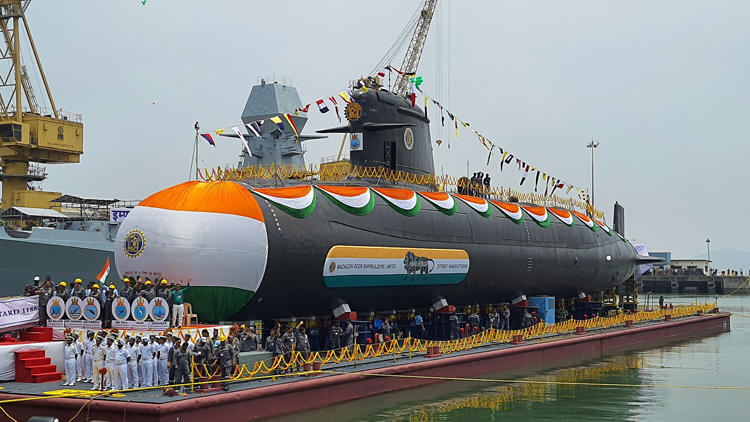
The Navy is working on a plan to construct a nuclear attack submarine (SSN). The Navy approached the government in May 2021 for permission to make changes to the 30-year submarine building plan approved in 1999; to replace six conventional attack submarines of the original 12 with six nuclear powered submarines given the changing geostrategic scenario and increasing Chinese deployment in the Indian Ocean. An SSN construction programme has now become an absolute necessity. The return of ‘Chakra’ Akula class SSN has diminished the Navy’s conventional underwater fighting capability. India has signed a lease agreement for another such submarine but it is likely to be delivered only in 2025.
Navy’s submarine arm is under considerable strain with Vagsheer, the sixth and final submarine in the Scorpene programme, is due for induction in early 2024
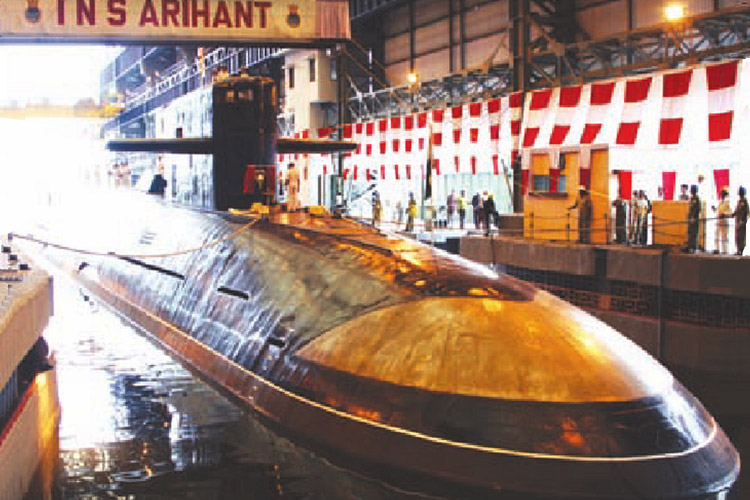
As of now, the Navy plans to enlist at least six P-75(I) class submarines and six SSNs over the coming 10 years. The Navy is looking forward to the commissioning of INS ‘Arighat’, the second ballistic missile nuclear submarine (SSBN) after the INS ‘Arihant’. in 2023. Arighat was launched on October 18, 2017 and was earlier expected to be commissioned in 2021. In March 2021 it was undergoing harbour trials and was slated to be commissioned in 2022. Now the commissioning of Arighat is likely sometime in late 2023. Under the 90,000 crore advanced technology vessel (ATV) project, two more 7,000-tonne SSBNs are also under construction.
China already fields the world's largest Navy that includes 50 diesel-electric and 10 nuclear submarines and is fast expanding its naval presence and logistical bases in the IOR. In addition it is in the process of supplying eight Yuan-class diesel-electric submarines with air-independent propulsion (AIP) to Pakistan. In order to deal with the collusive China-Pakistan threat, in the maritime domain are at least 18 conventional submarines, four SSBNs and six nuclear-powered attack submarines (SSNs). We need to develop our submarine combat potential at a much faster pace.





